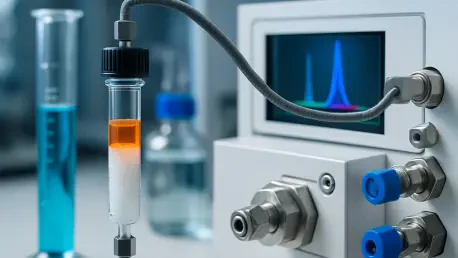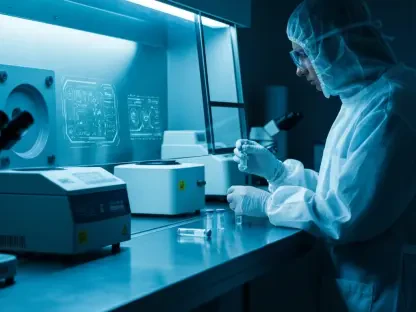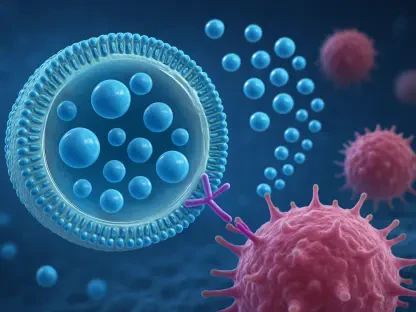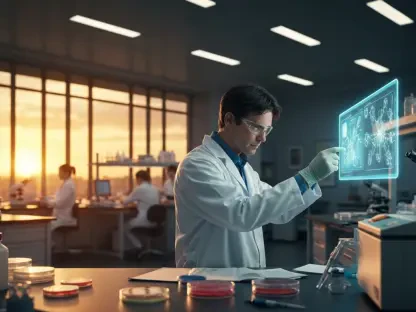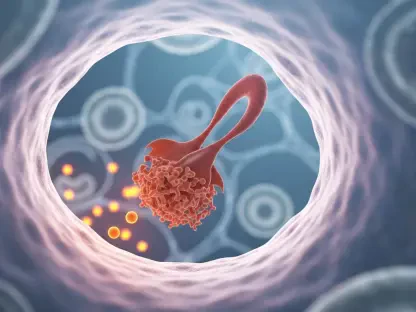What if a single misplaced molecule could halt the progress of a life-saving drug? In the fast-evolving world of biopharmaceuticals, oligonucleotide therapeutics stand at the forefront, offering hope for untreatable genetic disorders and rare diseases with their ability to target conditions at the molecular level. Yet, the complexity of these nucleic acid-based drugs poses unprecedented challenges in ensuring purity and quality. This is where cutting-edge chromatography steps in, revolutionizing how these therapies are developed and brought to patients.
The significance of this topic cannot be overstated. With the biopharmaceutical industry witnessing a surge in clinical trials for oligonucleotide drugs—over 200 candidates in development as of 2025—the demand for reliable purification and analytical methods has never been higher. Chromatography, as a cornerstone of this process, is not just a technical tool but a critical enabler of personalized medicine and genetic therapies that could redefine healthcare. This discussion delves into how innovative chromatographic techniques are shaping the future of these groundbreaking treatments.
Why Oligonucleotide Therapeutics Matter Now
The spotlight on oligonucleotide therapeutics shines brighter than ever, driven by their potential to address previously untreatable conditions like spinal muscular atrophy and Duchenne muscular dystrophy. These molecules, designed to modulate gene expression, offer a precision that traditional drugs cannot match. Their rise in clinical pipelines, with a projected growth of 30% in approvals between 2025 and 2027, signals a transformative shift in how diseases are tackled at their root cause.
This momentum, however, comes with hurdles. The intricate structures of oligonucleotides make them prone to impurities that can compromise efficacy or safety. Addressing these challenges is not merely a technical necessity but a moral imperative to ensure patients receive therapies that are both effective and reliable, pushing the industry to refine every step of the development process.
The Rising Role of Oligonucleotides in Biopharma
Beyond their scientific promise, oligonucleotide therapeutics are reshaping the biopharmaceutical landscape by aligning with the global push toward tailored medical solutions. Their ability to target specific genetic sequences makes them a cornerstone of personalized medicine, catering to individual patient needs in ways that broad-spectrum drugs cannot. This trend is evident in the increasing investment, with funding for nucleic acid-based therapies surpassing $5 billion globally in recent years.
The flip side of this innovation is the complexity it introduces. Unlike small-molecule drugs, oligonucleotides carry diverse impurity profiles, from truncated sequences to process-related contaminants, each requiring meticulous attention. This structural intricacy underscores the urgent need for advanced purification and analytical strategies to meet stringent regulatory standards and ensure therapeutic success.
Chromatography: The Core of Oligonucleotide Development
At the heart of overcoming these challenges lies chromatography, a technology evolving rapidly to meet the unique demands of oligonucleotide therapeutics. Specialized techniques are now tailored to remove impurities such as shortmers and longmers—byproducts of synthesis that can undermine drug potency. Recent advancements have shown a 40% improvement in purification efficiency, enabling higher yields of pure product for clinical and commercial use.
Analytical characterization, another critical aspect, ensures that every batch meets quality benchmarks through precise identification of molecular variants. Innovations in high-performance liquid chromatography (HPLC) have reduced analysis times by nearly 25%, accelerating development timelines. Real-world applications, such as those highlighted in industry case studies, demonstrate how these methods have streamlined processes for leading biopharma companies, ensuring compliance with global standards.
Scaling these solutions for industrial production remains a priority. Modern chromatographic systems are designed to maintain efficiency even at larger volumes, balancing cost with performance. This adaptability is proving essential as the demand for oligonucleotides grows, providing a foundation for sustainable manufacturing in a competitive market.
Expert Voices on Chromatographic Breakthroughs
Insights from industry leaders add depth to the conversation around chromatographic innovation. Patrick Endres, MSc, Head of Global Product Management at Tosoh Bioscience, has emphasized the need for customized approaches to handle the diverse challenges of oligonucleotide drugs. During a recent industry webinar, Endres noted that traditional methods often fall short, necessitating novel resins and protocols to achieve the desired purity levels.
Anecdotes from the field further illustrate the impact of these advancements. One biopharma developer shared how adopting a new ion-exchange chromatography technique reduced impurity levels by over 50%, a game-changer for their lead candidate. Such stories highlight a shared recognition among professionals that staying ahead in this space requires continuous adaptation and collaboration across disciplines.
These expert perspectives resonate with a broad audience, from analytical chemists to regulatory specialists, reinforcing the idea that chromatography is not just a tool but a dynamic field of innovation. The consensus points to a future where specialized methods will be standard, driven by the collective push for excellence in therapeutic development.
Practical Steps for Enhancing Chromatography in Oligonucleotide Work
Turning theory into practice is the next frontier for professionals in this field. A structured approach begins with evaluating purification strategies based on specific impurity profiles, ensuring that techniques like reversed-phase chromatography are matched to the molecular characteristics of each drug. This targeted selection can significantly boost process outcomes, as demonstrated by case studies showing a 35% reduction in contaminant carryover.
Optimization of analytical methods is equally vital to meet rigorous quality control standards. Adjusting parameters such as column temperature and mobile phase composition can enhance resolution, providing clearer data on product consistency. Industry examples reveal that such fine-tuning has helped developers cut analytical variability by nearly 20%, strengthening confidence in regulatory submissions.
For scalability, lessons from real-world applications offer valuable guidance. Implementing modular chromatographic systems allows for flexibility in scaling from lab to production, maintaining robustness under varying conditions. These actionable strategies empower process development scientists and regulatory experts to navigate the complexities of oligonucleotide therapeutics with precision and foresight.
Reflecting on Progress and Looking Ahead
Looking back, the journey of chromatography in supporting oligonucleotide therapeutics reveals a landscape of both challenge and triumph. The industry has grappled with the intricacies of nucleic acid-based drugs, yet innovative techniques have emerged as a beacon, enhancing purity and quality through tailored solutions. Each advancement, from improved purification to faster analytics, marks a step forward in delivering therapies that could change lives.
The path ahead calls for sustained effort and ingenuity. Professionals are encouraged to adopt the practical frameworks and insights shared by experts, integrating them into their workflows to address evolving demands. Collaboration across sectors stands out as a key driver, promising to unlock further breakthroughs in ensuring that these transformative drugs reach patients with the highest standards of safety and efficacy.
